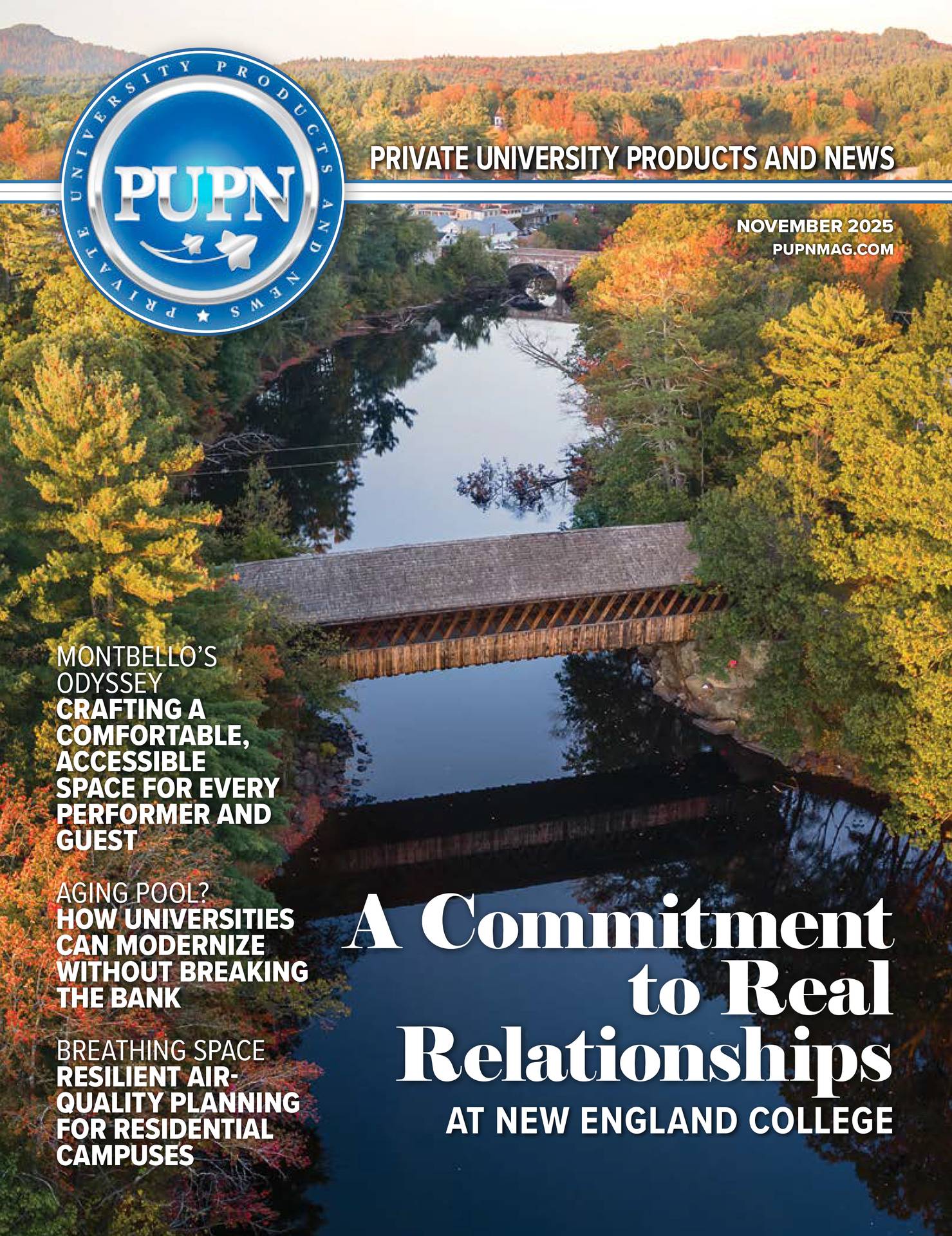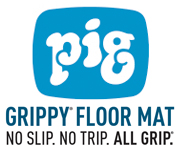We took a deeper look at the why and how of achieving healthy IAQ, with concrete strategies, real-world campus examples, and an executable roadmap suited to private colleges and universities.
Why Air Quality Matters—to People and Buildings
Poor indoor air quality produces immediate and measurable harms: respiratory irritation, headaches, reduced concentration, and higher rates of absenteeism. Over time, uncontrolled humidity and pollutants accelerate building damage—corrosion of mechanical systems, mold growth in envelopes and finishes, and increased maintenance costs. Conversely, investing in better ventilation, filtration and monitoring returns value across health, academic performance, and asset preservation.
Operationally, IAQ improvements also strengthen institutional resilience. During infectious-disease outbreaks, wildfire smoke events, or severe pollen seasons, campuses with pre-planned IAQ measures can continue teaching, housing and campus life with far less disruption. Organizations such as ASHRAE emphasize that ventilation and filtration reduce airborne concentrations of pathogens and that disabling HVAC systems is not an advisable strategy. (ASHRAE)
Public health and building science authorities recommend layered strategies (ventilation + filtration + supplemental air cleaning + monitoring) rather than single-technology fixes. Harvard’s Healthy Buildings program, for example, recommends prioritizing ventilation, filtration and supplemental cleaning and targeting a combined four to six air changes per hour (ACH) for classrooms through any combination of approaches. These principles apply to residence halls, dining centers and student centers—spaces where students gather for extended periods. (Healthy Buildings+1)
Core Components of an Effective IAQ Plan
An effective IAQ plan for residential colleges includes five interlocking elements: assessment, ventilation, filtration and air cleaning, monitoring and controls, and operations and maintenance (O&M). Below is a practical breakdown for each element.
1) Assessment: baseline and risk mapping
Begin with a campus-wide IAQ assessment. Identify building vintage, HVAC systems (central AHUs, unit ventilators, window ACs), availability of outside air, and spaces with high occupant density (dorm lounges, study rooms, dining halls). Prioritize vulnerable buildings, such as older envelopes prone to moisture, high-occupancy commons, and residence halls with limited mechanical ventilation. A focused assessment should include short-term measurements (CO₂ as a proxy for ventilation, temperature, relative humidity, particulate matter during peak times) and a mechanical inventory (filter frames, fan capacities, ability to accept higher MERV filters). The assessment informs which buildings can be upgraded quickly (e.g., filter changes) and which need capital projects (ERVs, new AHUs).
2) Ventilation: Get the air moving
Increase outdoor-air ventilation where feasible and safe. Mechanical ventilation upgrades—sizing and balancing, ensuring outdoor-air dampers are functional, and verifying airflow rates—are first-order actions. Where mechanical ventilation is limited, strategies include demand-controlled ventilation adjustments and administrative measures such as reduced occupancy and scheduled open-window periods where climate permits.
ASHRAE guidance emphasizes maintaining and increasing ventilation. For many campuses, a modest increase in outdoor-air exchange paired with improved filtration delivers outsized health benefits. (ASHRAE+1)
3) Filtration & supplemental air cleaning: practical layers
Upgrading to MERV-13 (or higher, where AHUs can accommodate the pressure drop) is a widely recommended and cost-effective step. MERV-13 filters capture a large portion of aerosol particles associated with respiratory viruses and remove fine particulate pollution (PM2.5) during wildfire or urban-smoke events. For rooms where central HVAC cannot support higher MERV, portable HEPA air cleaners provide targeted supplemental air cleaning.
Colleges have reported success combining whole-building filter upgrades with portable units in high-risk zones. Cal Poly Pomona completed a campus filter upgrade and rapid deployment of air scrubbers across multiple buildings as part of return-to-campus measures, improving filtration coverage quickly. (Cal Poly Pomona)
UV germicidal irradiation (UVGI)—either in-duct or in upper-room configurations—can inactivate airborne microbes when designed and installed correctly. Several campuses installed UVGI during the pandemic to add another protective layer; Herkimer College and others fitted HVAC systems with UVGI to complement filtration upgrades. Proper design and commissioning are essential to realize UVGI’s benefits and avoid unintended effects. (hvacinsider.com+1)
4) Monitoring and controls: Measure to manage
Continuous monitoring creates situational awareness. CO₂ monitors are inexpensive proxies for ventilation performance; sustained CO₂ above common thresholds (often 800–1,000 ppm, depending on local guidance) signals inadequate fresh-air delivery. Particle counters and PM2.5 sensors help during wildfire smoke events, and VOC sensors indicate indoor source problems.
Combined with building automation system (BAS) integration, monitoring enables automated responses (e.g., increase outdoor air or boost fan speeds when CO₂ rises). Private institutions are increasingly adopting campus CO₂ monitoring platforms to generate building-level dashboards and historical records. (Manx Technology Group)
5) Operations and maintenance: the human factor
Good IAQ is as much about people as equipment. Regular filter replacement, fan and damper inspections, cleaning coil maintenance, and periodic re-commissioning keep systems functioning at design performance. Training and documented procedures for custodial and HVAC staff—including checklists for wildfire and infectious-disease events—are essential.
Facilities should also update procurement standards to specify minimum filter MERV ratings and define acceptance testing for new equipment. Communications plans—signage about safe ventilation practices, transparent dashboards for students and parents—build trust and set expectations.
Real Campus Examples and Outcomes
Private colleges and public universities around the country invested in IAQ during and after the COVID-19 pandemic; their experiences offer realistic models for private higher-education leadership.
Cal Poly Pomona completed high-performance filter installations across dozens of campus buildings and deployed air scrubbers to provide added protection as students returned to campus. The initiative emphasized rapid implementation and layered protection. (Cal Poly Pomona)
Michigan State University undertook a campus program deploying UV-C air-purification devices in residence halls as a supplementary measure to their existing ventilation strategy. The effort demonstrated that supplemental technologies can be installed with minimal disruption when coordinated with facilities planning. (Michigan State University)
Pittsburg State University publicly reported installing air-cleaning devices in dorms to “ensure the highest air quality possible” for student living spaces—an example of how institutions communicated investments directly tied to student life. (Pittstate)
Herkimer County Community College installed UVGI in HVAC systems to protect students and staff from airborne pathogens, illustrating that even smaller institutions can execute targeted IAQ retrofits. hvacinsider.com
These projects show a common pattern: (1) prioritize filter upgrades where possible; (2) use portable or localized technologies where central systems are limited; (3) communicate actions to the campus community; and (4) keep O&M and commissioning budgets in view so benefits persist.
Designing a Campus IAQ Plan—an Actionable Roadmap
Below is a pragmatic, phased roadmap tailored to resource realities on many private campuses.
Phase 0: Executive endorsement & cross-functional team
Secure executive buy-in (risk mitigation, student experience, asset protection). Form a team: facilities leadership, campus health services, procurement, IT (for monitoring integration), and student affairs for communications.
Phase 1: Rapid wins (0–3 months)
Install or verify MERV-13 filters in AHUs where fan capacity allows.
Deploy portable HEPA cleaners in high-occupancy common rooms and smaller study spaces.
Calibrate and deploy CO₂ monitors in residence hall lounges and large study rooms.
Publish a simple communications note to students and parents describing measures taken.
These are low-cost, high-impact steps that also demonstrate progress.
Phase 2: Measurement & controls (3–9 months)
Roll out a campus monitoring dashboard (CO₂, temperature, PM2.5 where relevant).
Integrate alerts into the BAS for automated responses.
Conduct ventilation balancing and spot airflow testing in priority buildings.
Phase 3: Capital upgrades (9–36 months)
Plan for ERV/HRV installations in buildings with low outdoor-air capacity.
Replace obsolete AHUs and design new systems to meet ASHRAE standards for ventilation and infectious-aerosol control where major renovation is planned.
Consider in-duct UVGI for central systems, and upper-room UVGI in large commons where appropriate.
Phase 4: Ongoing resilience & policy
Incorporate IAQ targets into campus sustainability and capital planning.
Schedule recurring commissioning and include IAQ metrics in annual performance reviews for facilities.
Create protocols for wildfire smoke events and infectious disease outbreaks that combine monitoring, occupancy limits and supplemental air cleaning.
Budgeting, Procurement and Vendor Considerations
IAQ improvements span operating expenses (filters, HEPA units) and capital expenses (AHU replacement, ERVs). For many private colleges a blended approach works: use operating budgets for immediate mitigation and plan capital investments into multi-year equipment replacement cycles.
When procuring equipment and services:
Specify performance—not just brand: e.g., require filters to meet MERV-13 nominal efficiency and specify maximum pressure drop.
Require factory acceptance tests for AHUs and UVGI installs, and clear commissioning deliverables.
Vet portable air cleaner CADR (clean air delivery rate) relative to room sizes and require third-party safety certifications.
Consider vendors experienced in educational facilities and with clear O&M training packages.
Facilities teams should also ask vendors for lifecycle cost analyses (energy penalties of higher MERV filters, maintenance intervals) and include those figures in total cost of ownership.
Communication, Privacy and Stakeholder Expectations
Transparency builds trust. Simple dashboards, FAQ pages and visible maintenance actions reassure students and parents. At the same time, when deploying sensors and monitoring, balance transparency with privacy—CO₂ and PM data are aggregate environmental metrics, but avoid pairing occupancy sensors with personally identifiable data without clear policies and consents.
Train residence life and student staff to explain IAQ measures in plain language (e.g., “We have upgraded filters to better capture fine particles and installed CO₂ monitors to ensure rooms are getting enough fresh air.”). Clear messaging reduces rumors and helps students buy into behavioral measures (opening windows when advised, not blocking vents).
Measuring Success—KPIs to Track
Select a mix of short-term and long-term KPIs:
Short term (immediate wins)
Percentage of AHUs upgraded to MERV-13 or better.
Number of portable HEPA cleaners deployed in priority spaces.
Number of CO₂ monitors installed and percent of rooms regularly below target CO₂ threshold.
Medium/long term (sustained performance)
ACH or equivalent clean-air delivery in target spaces.
Trends in PM2.5 during wildfire seasons (reduction observed after measures).
Student satisfaction scores related to housing comfort and perceived air quality.
Maintenance backlogs related to moisture/mold complaints — a decline indicates building health improvements.
Common Pitfalls and How to Avoid Them
Pitfall: Installing higher-efficiency filters without checking fan capacity, causing system strain.
Avoidance: Perform pressure-drop calculations; use variable-speed drives or staged upgrades.
Pitfall: Buying portable air cleaners without sizing them to rooms.
Avoidance: Match CADR to room volume and occupancy; prioritize units with validated performance.
Pitfall: Relying solely on a single technology (e.g., ionizers) with uncertain benefits.
Avoidance: Favor evidence-based measures (ventilation, MERV-13, HEPA, monitored controls) and consult ASHRAE/EPA guidance. ASHRAE+1
Pitfall: Neglecting O&M after initial install.
Avoidance: Budget for recurring filter replacements, calibration and periodic re-commissioning.
Final thoughts: IAQ as operational excellence
For private colleges, excellent air quality is both a student experience differentiator and a risk-management requirement. The best programs combine measurable actions (filtration, ventilation, monitoring) with strong operations practices and transparent stakeholder communication. The evidence and campus case studies show that reasonable investments—ranging from filter upgrades and HEPA units to strategic capital investment —deliver tangible health and institutional benefits.
Begin with a clear assessment, prioritize immediate high-value goals, and institutionalize IAQ in capital planning. With executive sponsorship, a cross-functional team, and a layered, measurable approach, residential colleges can build indoor environments that support wellness, learning and the longevity of campus assets.










